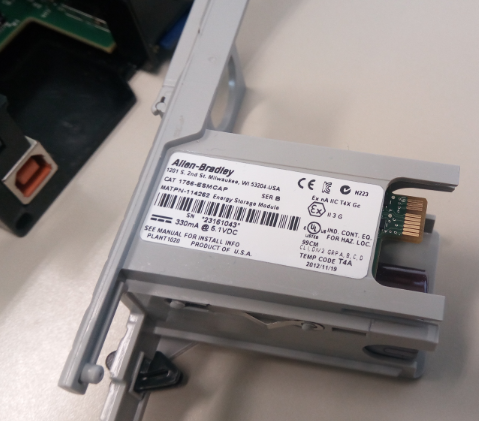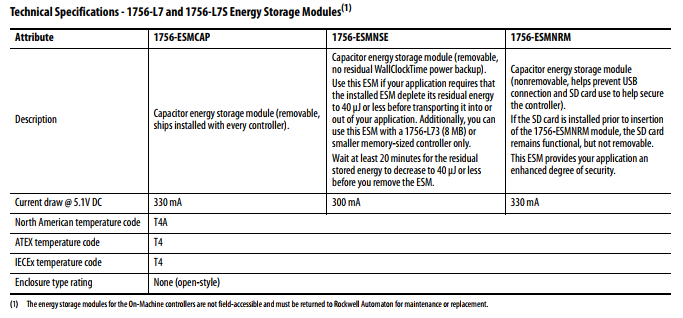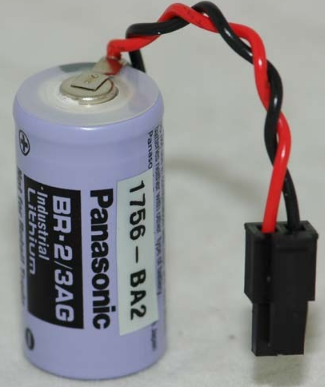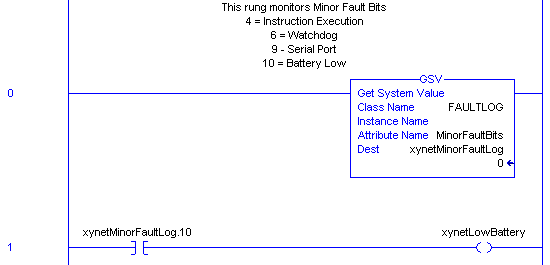
Up-to-today, conversations of ControlLogix CPU battery only exist in sporadic, small chat rooms, and/or email conversation between Allen-Bradley distributors and end-users. I wanted to break out of this “cage” and share some of my professional and technical experience about these batteries, cost, after market solutions to everyone, and hopefully it might allow you to make excellent recommendation to your facility.
ControlLogix CPU battery has to be effectively maintained on regular basis to ensure data retention and no impact to the process. Allen-Bradley recommend recycling battery every 2 to 3 years, but they come with a premium price (at about CAD$450 per battery with wires and connector); as quoted to me on Feb 2018. Cost can add up really quickly if you have 48 ControlLogix in your plant or facility.
The table below shows Allen-Bradley catalogue number for batteries that are recommended for 1756-L6*. Note that, 1756-L7* model of the PLC comes with “1756 Energy Storage Modules” which is basically is a capacitor circuitry; see section below. The table was extracted from the ControlLogix System – User Manual, page 75.

When the battery is approximately 95% discharged, low battery warnings are issued via the following means.
- The BAT is solid red

- A minor fault (type 10, code 10) is logged. Table below show all minor fault type 10 which pertains to battery fault (table is from Logix5000 Controllers Major, Minor, and I/O Faults, page 36-37).

Purpose of The Battery
ControlLogix PLC retains important information (such as RTC, PLC configuration, PLC logic, process setpoints) in an EPROM, which is powered via a battery. Naturally, if you remove 120/240VAC power supply to the PLC, continues to power the EPROM. If both the 120/240VAC power supply and the battery were to be removed, the PLC would lose all the information, hence setting back to its “factory” state. For the same reason, PLC battery replace Preventative Maintenance (PM) must be performed on regular interval.
Table below shows average battery life (table is from ControlLogix System, page 77) when power is not applied to ControLogix PLC.

Can ControlLogix battery be changed while PLC is powered with 120/240VAC
Yes, you can as the battery is easily accessible from the front face of the CPU, as long as user logic does not have any code that have adverse effect to the process, such as stop process if the battery goes down you can safety change it while the processor is running. Btw, it is uncommon to have such a logic built but nevertheless I figure I should underscore it.
1756 Energy Storage Modules
Instead of a battery, the 1756-L7 and 1756-L7S controllers are shipped with a 1756-ESMCAP energy storage module (ESM) already installed. See images of the 1756-ESMCAP module below. I have a YouTube video on how to remove it at the end of this section.




The table below is from “1756 ControlLogix and GuardLogix Controllers”, (page 39).

After Market Battery
After market battery can be used for ControlLogix but it can be either Lithium or Lithium ion type, as far as my personal recommendation is concern. My preference would be Lithium mainly due to cost and the characteristics difference being so small if not none. Yes, I do understand that there is a huge difference between Lithium and Lithium ion battery, but as far as application perspective (such as PLC) the leaps and bound that Lithium ion battery has, is of no value. One difference is that Lithium ion battery hold and discharges power very well, while Lithium not so well. But in the PLC environment, power is always available, only in the instance where there is blackout or power loss which is when the PLC battery is used. Lithium ion battery works wonders for cellphone application where the cellphone taps into the battery power all the time until it is returned to the charging station. But in the industrial automation environment, power is always restored within 1 hour window (at least all the gas plant and booster compressor station where I worked).
Apart from that, one take away is that if you buy an after market batter, make sure the leads are already assembled to the batter. Do not try to solder the leads yourself as it is NOT recommended, especially for beginners soldering iron users as there is a serious danger of overheating which can damage the internal barriers and cause excessive internal leakage. This can can quickly cascade into a damaged battery, or just about ready to explode.
I don’t work for Allen-Bradley or Rockwell, and I am not saying you cannot use after market batteries but I would be cautious about it as I have been supplied with wrong batteries, batteries with no leads (even when I ordered it with leads) or simply I am shipped with wrong battery connectors. Here is one example of after market battery for ControlLogix with pre-soldered leads.

Difference between Lithium and Lithium-Ion Batteries
Lithium-Ion batteries have a lower self discharge rate than other types of rechargeable batteries. This means that once they are charged to their capacity and disconnected, they will retain their charge for a longer period of time than other types of rechargeable batteries. Depending on the environment condition that they are stored in, Nickel Cadmium (NiCad) and Nickel Metal Hydride (NIMH) batteries loses 1-5% of their charge per day. Lithium-Ion batteries will retain most of their charge even after months of storage.
They have a higher energy density than most other types of rechargeable batteries, which means that for their size and/or weight it can hold much more energy than other rechargeable batteries. In additional to that, Lithium-ion batteries also runs at a higher voltages than other rechargeable batteries (about 3.7VDC against 1.2VDC for Lithium-Ion and NiMH or NiCd respectively).
“Memory Effect” of Nickel Cadmium (NiCad) and Nickel Metal Hydride (NIMH) batteries
Memory effect, also known as battery effect, lazy battery effect, or battery memory, is an effect that is observed in NiCad and NIMH rechargeable batteries that causes them to hold less charge. What it translates to is that, when NiCad and NIMH partially discharged/used before charging, the battery “forgets” that it has the capacity to further discharge all the way down. Th eonly way to remedy this is to fully discharge/drain your NiCad or NIMH battery at least once a month, before fully charging it back again.
For this reason, NiCad and NIMH batteries are not a good solution for critical process environment.
Battery Replacement Compromise
As I was mentioning, it cost about CAD$450 per battery; as quoted to me on Feb 2018. And with 48 ControlLogix in the plant I was working at, the cost was quite astronomical (at CAD$21,600 purely for the batteries without GST).
Given the cost and that the battery can be replaced without powering down the ControlLogix, one of the best way to mitigate this delima would be to approach it with a reactive action. That is, replace the battery only when it has faulted or cannot sustain the require voltage. Locally the PLC will indicate that the battery has fallen below its lower threshold with the “BATT” LED (on the ControlLogix CPU faceplate), but you can further automate by adding the GSV block to your logic to monitor the battery status, and setup to trigger an alarm on your Control Room HMI system. The screenshot is a short logic to monitor the battery status in the ControlLogix.

Make sure that there is no pre-existing logic that would cause major interrupting to the process; such as ESD a compressor or plant when the battery low. Not too sure why one would do that but just wanted to mention it.
The YouTube vilog below demonstrates the logic above in action when the PLC battery is disconnected. Just to extend the idea, the output bit can use used to trigger alarm on your HMI system or a callout system.
The YouTube vilog below demonstrate how to trap battery loss for 1756-L71 CPU with 1756-ESMCAP module (Energy Storage Module) using the GSV (FaultLog) tag.
Effects Of Power Cycle Without PLC Battery
Ok. What would happen if I power cycle the ControlLogix without PLC battery? Let put it into more practical scenario. What would happen if your ControlLogix battery has failed (its voltage has dropped below its low threshold) and your facility has just experienced plant wide power outage? Will the PLC be able to function as its original state before the power “blip”? Will the PLC still retain the program and its setpoints in the memory?
The 4.5 minutes YouTube vilog will answer all your questions… Spoiler Alert…. You will lose everything…
Reference